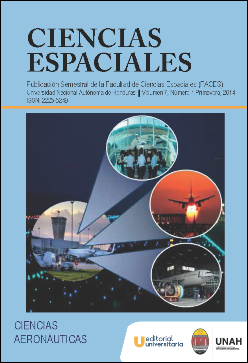Characterization of radio interference and noise floor at 1420 MHz Frequency
DOI:
https://doi.org/10.5377/ce.v7i1.2525Keywords:
Radio Astronomy, RFI Studies, 1420 MHz, Flat Noise, radio interferenceAbstract
This paper presents the results of the study, “Characterization of radio interference and noise floor at 1420 MHz Frequency” and this study is of primary importance in the pre-implementation stages of a radio telescope.
In our country there has been no study of this type, at any frequency or range of frequencies allocated to the radio astronomy service, service which was jointly defined by the International Astronomical Union and the International Telecommunication Union (IAU and ITU, respectively).
As primary endpoint, the radio conditions in Tegucigalpa, specifically in the Central American Astronomical Observatory of Suyapa (OACS), or in other words, were determined radio environment that will be expose any signal coming from celestial object , emitted at 1420 MHz frequency (λ = 21 cm).
Data were collected through Radio Frequency Interference monitoring techniques (RFI), established in the “Spectrum Monitoring Handbook” published by ITU in 2011 and with the use of certified equipment by ITU for RFI studies.
The conclusions and recommendations are based on the provisions issued by ITU for radio astronomy and analysis of radio conditions at the OACS.
The study showed that the location of the Astronomical Observatory of Suyapa (OACS) has a very high level or noise floor, about 12 dB above the sensitivity of the equipment used, however, signals from sources like the sun and the Milky Way, are feasible to be received with some confidence.
Revista Ciencias Espaciales, Vol.7(1) 2014, 35-59
Downloads
1679




